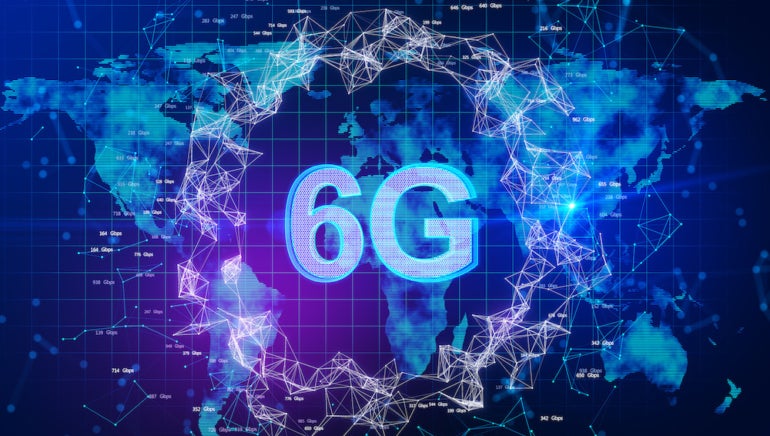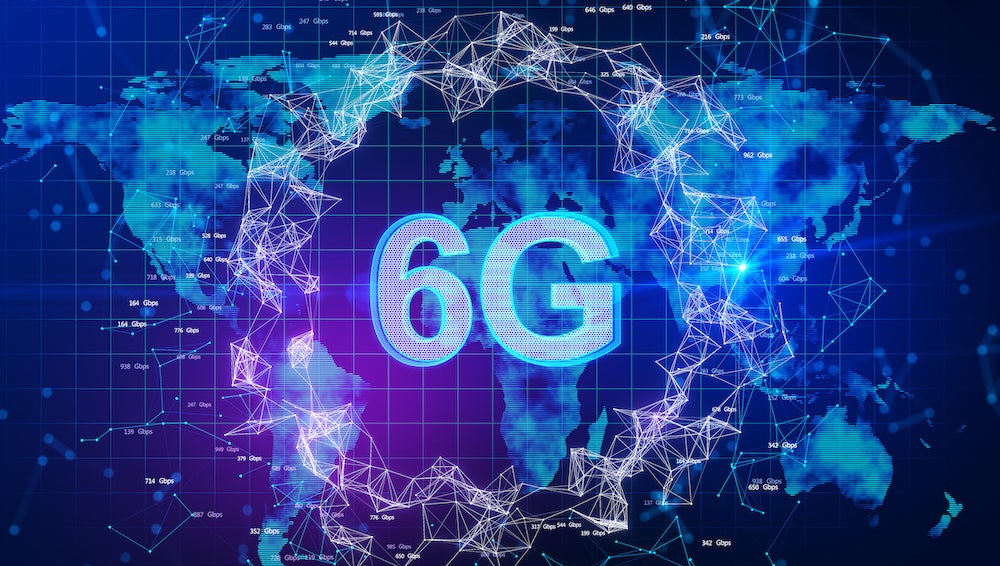
Though 6G is not yet a viable technology, the time is fast approaching when 6G tools will become widespread. But what exactly does that mean for the future of connectivity? 6G, in fact, will be able to support a greater network of devices across the globe, will revolutionize health care, and will help to develop technologies that have been popularized in recent years.
6G networks will change the ways in which we conduct business and connect with others. Though transitioning to 6G technology will take time, there are many incredible use cases that are worth waiting for. Before examining the applications of 6G, however, it is first important to understand exactly what 6G is.
Jump to:
- What is 6G?
- Industry 4.0 development and 6G
- Innovation for healthcare technologies with 6G
- FYI: AR, VR and 6G
- 6G for autonomous transportation
- The future of 6G technology
What is 6G?
6G is the evolution of mobile networks, representing the sixth generation of connectivity. It goes beyond 5G, which is currently being utilized around the world, and represents a possible shift in the global community that would allow mobile devices to support demanding and previously impossible tasks. Indeed, the use cases for 6G technology include such revolutionary developments as industry 4.0, augmented reality, autonomous transportation, eHealth and more.
There have been great insights into 6G in recent articles from Ericsson about 6G use cases and Hexa-X development. Coupled with a research paper from NYU about a 6G future, we can begin to understand the implications and applications of upcoming 6G networks.
Industry 4.0 development and 6G
The fourth industrial revolution has already begun. It is, in the simplest terms, the creation and development of industrial technologies that will help advance manufacturing and business around the world. Currently, however, industry 4.0 is only a shell of what it could become. With the power of 6G networks, companies across the globe could finally begin to realize industrial advancements.
This would mean the implementation of robotics, both in factory and consumer settings. These machines would cooperate with each other to perform tasks and could be accessed via mobile networks. It would also allow for the utilization of increasingly sophisticated cyber-physical systems, which typically call for industrial tools to be operated and monitored by computer algorithms.
6G technology will also pave the way for increasingly viable cloud business services. With revolutionary jumps in bandwidth and reliability, cloud platforms can be expected to support massive (and global) businesses without running into latency issues. In fact, in order to realize AI, augmented reality and telepresence technologies, it is expected that the next generation of mobile connectivity will have to support download speeds of more than one terabyte per second. This is leaps and bounds ahead of the current goal for 5G networks (10 Gbps).
Innovation for healthcare technologies with 6G
Healthcare is also expected to change dramatically in a 6G future with the advent of eHealth. eHealth will allow providers to deliver ultra-high speed connections, constant availability and even telepresence tools to patients. More importantly, it could revolutionize in-person care by using augmented reality to help accomplish surgical or emergency treatment.
These health changes are going to be made possible by the increased power of 6G internet technology and by AI programs that will be able to manage systems and improve constantly by self-evaluating their progress. Hopefully, this will allow for the development of a safer and more efficient health industry.
SEE: Artificial Intelligence Ethics Policy (TechRepublic Premium)
FYI: AR, VR and 6G
Outside of the health industry, augmented reality will become a staple of modern life in a 6G future. 6G will not only pave the way for incredibly advanced games, but will also transform business and entertainment. Imagine being able to place a digital version of the Mona Lisa on your wall to study for an exam, or imagine viewing a life-size model of the human body in preparation for a surgical procedure. These things will be possible with 6G connectivity.
6G internet technology will begin to use powerful sensors to create digital assets based on real-life objects and people, thus bringing the digital world ever closer to the real one. The demands of creating holograms, or any 3D representation from digital assets, are great. Only with the increased speed, data storage and bandwidth of a 6G internet can this future be realized.
6G for autonomous transportation
Using a combination of automation, AI, high-speed connectivity and machine learning, autonomous transportation will finally become viable. There has been talk for many years about automation being applied to trucking and bus industries, but 6G will make it possible for any family to purchase an autonomous car. These vehicles will communicate seamlessly with one another and will work to create a traffic-free road experience.
There have been concerns about the algorithms that autonomous vehicles will be equipped with — i.e., what would an autonomous vehicle “decide” to do if someone were to suddenly jump in the road? Risk the driver’s life, or risk the pedestrian’s? — but these potential issues are not the result of 6G advancement. Instead, they’re the result of the implementation of automated software.
The future of 6G technology
A 6G future is fast-approaching and will bring with it a great change to global businesses, entertainment, healthcare and learning. 6G technology will make it easier for organizations to thrive in a digital world.
Yet 6G internet technology is also fraught with risk. Is it smart to begin implementing remote surgical procedures? How frequently will augmented software err? Is advanced reliance on robotics really a viable option for the future?
These questions cannot be answered now, nor can a 6G Internet be completely understood until it is implemented. All that is clear is that a 6G future will mean great changes to the world at large, many of which may be helpful, others of which may not.
Discover more about 6G here: Spirent shares its predictions and NTT develops the world’s fastest wireless communication area estimation technology.

